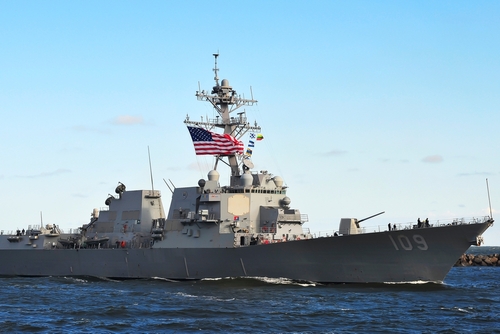
The United States Navy has been given a critical directive to prepare for a potential conflict with China by 2027, signaling an escalation in tensions over Taiwan and the broader Indo-Pacific region. This plan was outlined in a new strategic document released on September 19, 2024, titled the "Navigation Plan for America’s Warfighting Navy." The document emphasizes that China, and its military, pose the foremost challenge to U.S. security and demands urgent action to enhance the Navy's readiness for sustained combat.
This preparation comes amid concerns that China is gearing up for a possible invasion of Taiwan, a self-governing island that Beijing considers a breakaway province. Chinese leader Xi Jinping has called for his military to be ready for an invasion as early as 2027. Over the past decade, China has dramatically expanded its naval forces, launched new aircraft carriers, and improved its missile and drone capabilities. This rapid modernization has led to fears that China is seeking to challenge U.S. naval dominance, especially in the waters near Taiwan and the South China Sea.
WW3: US Navy Directed to Prepare for War With China by 2027
”Chief of Naval Operations Adm. Lisa Franchetti, the highest ranking officer in the US Navy, unveiled a plan on Wednesday to be ready for a war with China by 2027 as the US military is preparing for a direct fight with… pic.twitter.com/SRIC0Gr2jq
— SynCronus (@syncronus) September 21, 2024
The new U.S. Navy directive outlines several steps to bolster its capabilities, including increasing fleet size, enhancing recruitment, and integrating advanced technologies such as autonomous and robotic systems. According to the document, by 2027, the Navy aims to integrate these technologies fully into combat operations, ensuring commanders can deploy them effectively in a conflict. The U.S. is also working closely with its allies in the region to reinforce supply chains and strengthen military cooperation, part of a broader strategy to counter China’s growing influence.
One of the Navy's most pressing concerns is the imbalance in naval forces. The Chinese navy, benefitting from being geographically concentrated in the Indo-Pacific, outnumbers the U.S. Navy in ships. China can deploy a large portion of its fleet in the region, backed by land-based forces. In contrast, the U.S. Navy is stretched thin, with commitments across the globe, creating logistical and operational challenges. A recent congressional report raised concerns about the U.S. military's ability to both deter and defeat China if conflict arises.
Tech and Science policy professor MIT, Ted Postol on RT explains Top Secret 'super-fuse' program that he verified through US Navy patents. He says this program includes a 'first strike' component that cannot deter all out mutually assured destruction (MAD) in war w/ China, Iran. pic.twitter.com/cRNQNlME5p
— csnetkova76 (@csnetkova76) September 22, 2024
The geopolitical stakes are high, with Taiwan being a flashpoint. The island holds significant strategic importance due to its location and its role in the global semiconductor supply chain. A Chinese invasion could spark a wider regional war, dragging in not only the U.S. but also its allies such as Japan, Australia, and possibly even NATO, given the implications for global security.
China’s ambitions extend beyond Taiwan. Beijing has asserted dominance over the South China Sea, a critical shipping lane, and has constructed artificial islands equipped with military installations. These aggressive moves, combined with frequent naval drills and air patrols near Taiwan, are seen as efforts to normalize its presence and intimidate both Taiwan and its neighbors.
The U.S. Navy’s new plan, dubbed Project 33, is designed to address these emerging threats. The project focuses on eliminating delays in ship maintenance, accelerating the deployment of advanced technologies, and expanding naval training and recruitment. However, the document also warns that increasing the fleet size to match China's is unrealistic in the short term. Instead, the U.S. Navy will rely on more flexible and high-tech solutions, such as integrating unmanned systems.
While the Navy has laid out an ambitious path, success hinges on securing Congressional support for increased defense spending and collaboration with U.S. allies in the Indo-Pacific. The coming years will determine whether the U.S. can maintain its naval superiority and effectively counter China's aggressive moves in the region.












